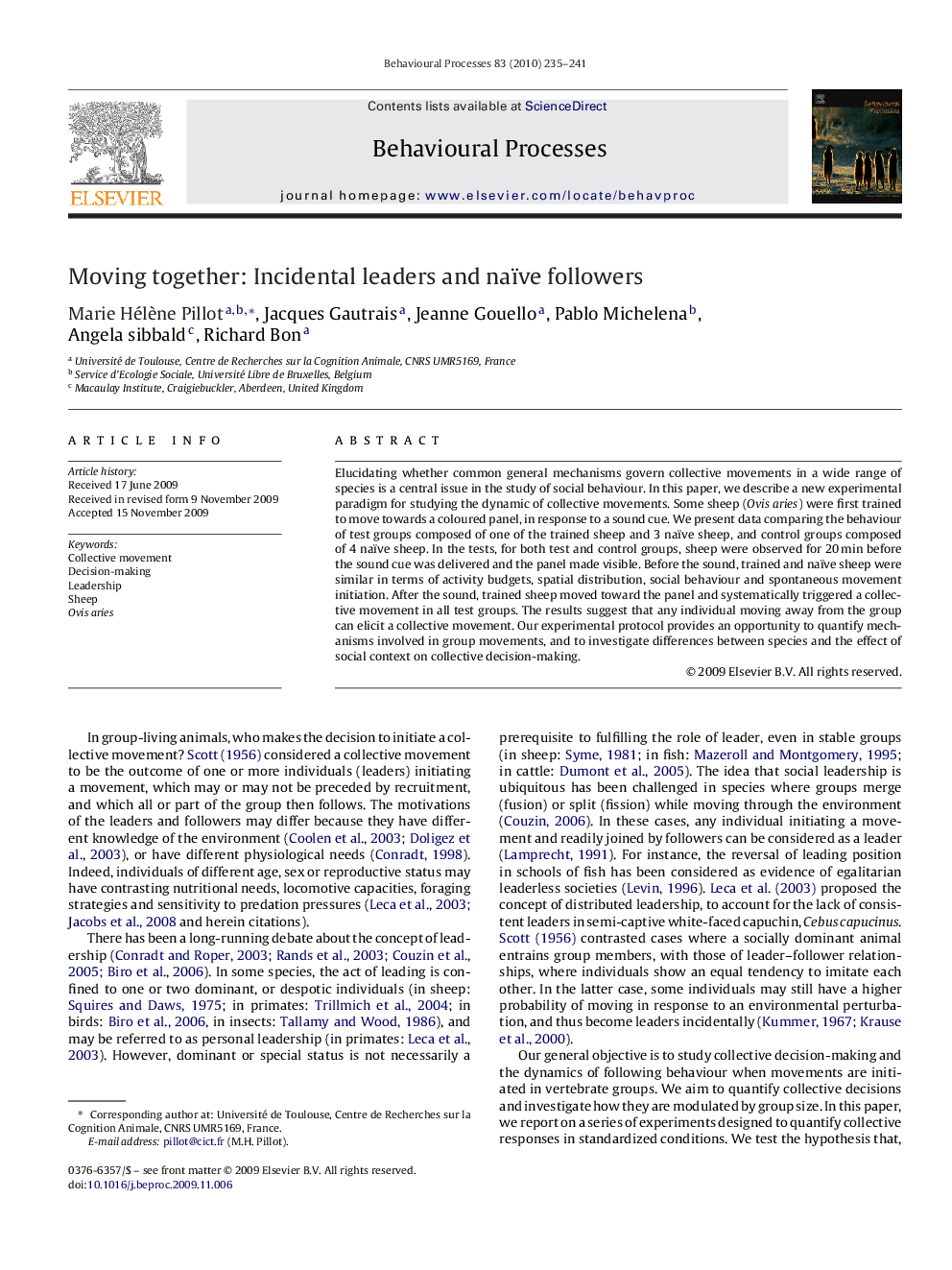| Article ID | Journal | Published Year | Pages | File Type |
|---|---|---|---|---|
| 2427215 | Behavioural Processes | 2010 | 7 Pages |
Elucidating whether common general mechanisms govern collective movements in a wide range of species is a central issue in the study of social behaviour. In this paper, we describe a new experimental paradigm for studying the dynamic of collective movements. Some sheep (Ovis aries) were first trained to move towards a coloured panel, in response to a sound cue. We present data comparing the behaviour of test groups composed of one of the trained sheep and 3 naïve sheep, and control groups composed of 4 naïve sheep. In the tests, for both test and control groups, sheep were observed for 20 min before the sound cue was delivered and the panel made visible. Before the sound, trained and naïve sheep were similar in terms of activity budgets, spatial distribution, social behaviour and spontaneous movement initiation. After the sound, trained sheep moved toward the panel and systematically triggered a collective movement in all test groups. The results suggest that any individual moving away from the group can elicit a collective movement. Our experimental protocol provides an opportunity to quantify mechanisms involved in group movements, and to investigate differences between species and the effect of social context on collective decision-making.
